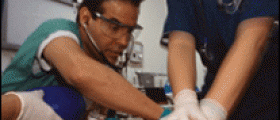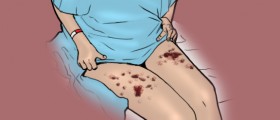
Septic shock, or as we commonly refer to as sepsis, is very severe health problem that can lead to the death outcome within days, or even hours. Apart from being life threatening and extremely progressive condition, it is never easily diagnosed, because the key to the treatment is to determine exactly when the normal infectious process turned into the general one, that is, of the whole body.
That is, the process begins usually because of the presence of the bacteria of the type gram-negative and their toxins which spread through the bloodstream. Nevertheless, it can be triggered also by the virus or fungi, but more rarely. Later on, but very progressively, the toxins, carried by the blood, reach the vital organs and, additionally, the organism reacts with the intense inflammatory response which damages the organs as well. The lack of the circulation in the organs and tissues is due to the small blockages of the blood flow. The worst case scenario is the multiple organ failure, hence the inevitable death.
The indicators of sepsis
That is exactly why the medical attention should be provided as soon as possible. The first indicators of sepsis are the lightheadedness, the increased pulse, increased temperature of the body, the irritation of the skin, the troubles while inhaling and exhaling, hypotension, the coldness felt on the legs and arms, and the painful joints.
But, in the advanced stage of the inflammation, the temperature of the body abruptly decreases and the skin becomes bluish. Having in mind the severity of this health problem, the best thing to do is to try to avoid it, only by boosting up the immunity, so that it could stop the infection from happening in the first place. That is the reason why the individuals who suffer from some underlying disease and thus, from not so strong immunity, are more likely to be affected by sepsis.
When it comes to the treatment, after testing the blood (which is focused on discovering the amount of oxygen, the leukocytes and the provokers of the infection in the blood), the liquid from the spine and urine, the test with the X-rays and the Computed Axial Tomography (CAT scan) are performed, so that the doctor could be sure whether the organs are affected or not, and how much.
The treatment itself consists of the intervention of giving back enough oxygen into the organism, by the device that helps the inhalation of it, by putting the drugs that annihilate bacteria, the fluids and the drugs intended for encouraging the higher pressure of the blood, into the blood flow. In the most serious stages of the sepsis development, the protein C is administered too, in order to remove the blood clots and minimize the inflammatory process.
- medlineplus.gov/ency/article/000668.htm
- www.nhs.uk/conditions/septic-shock/
- Photo courtesy of Gwydion M Williams by Flickr: www.flickr.com/photos/45909111@N00/8603350712/














-Arthritis_f_280x120.jpg)


Your thoughts on this
Loading...